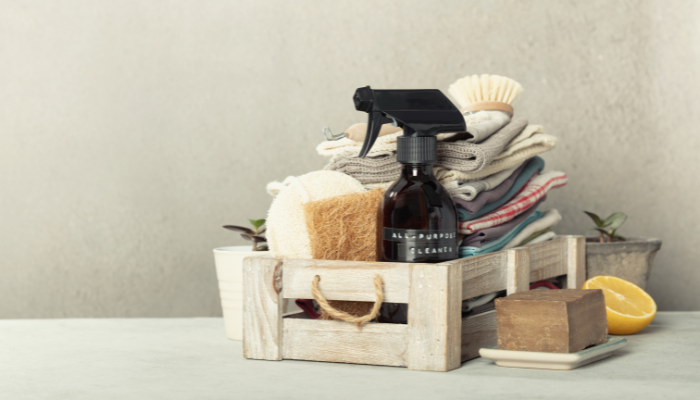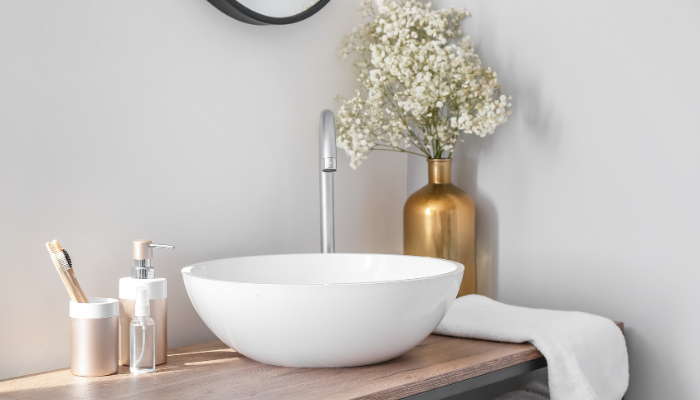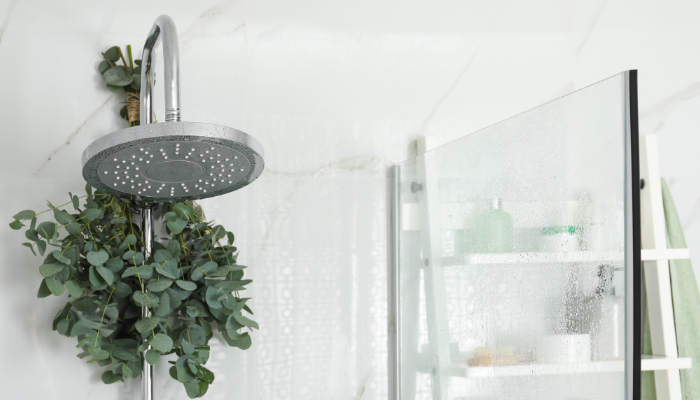You want to switch to natural, eco-friendly cleaning products but you don't know where to start. It can feel really daunting when you're used to a particular routine and set of products.
To help you feel more confident about making some changes, we've put together this beginner's guide, with our best advice to help you on your way.
Your Guide to Natural Cleaning
Cleaning is an essential part of our lives. From cleaning our bodies, to inside our homes and beyond. You probably have a set of products you trust to get the job done, but how often do you truly understand what's inside them?
It’s no secret that regular chemical-based cleaning products contain ingredients that can harm your family and the environment, but opting for friendlier alternatives can feel like an unknown world. You may be worried about their effectiveness, the cost, or just don't know where to start.
If you’ve been curious about making the switch to natural, eco-friendly cleaning products, then you've already made that vital first step. Well done! We've laid out the next steps for you...
1. Read ingredient labels carefully
As consumers are becoming more conscious, companies know that using the right buzz words will increase their sales. The problem is that often these terms are used loosely, and aren't 100% true. This is called "greenwashing".
Some terms you've likely seen are:
Green
Eco-friendly
Plant-based
Non-toxic
Biodegradable
Hypoallergenic
Free and Clear
Sustainable
Essential Oils
We use a lot of these terms ourselves, because for us, they're true. But lots of brands know that consumers won't read their ingredients list, or if they do, they won't know what they are anyway.
To make sure these terms have been used honestly, ask yourself two things:
1. Is the ingredients list unnecessarily long?
2. Do you recognize the names of all the ingredients listed?
If you answered yes to the first question, and no to the second, it's wise to avoid this product.
Tip: Sometimes brands will use a descriptive word instead of listing the actual ingredients—watch out for anything with fragrance. Companies aren’t required to disclose the actual makeup of fragrances in their labels. However, many fragrances are mostly derived from chemicals. On the other hand, plant-based products that derive their fragrances from essential oils are safe.
2. Start with one natural cleaning product at a time
Do you feel overwhelmed by all noise around chemical cleaning products? You may feel scared or anxious about the cleaning solutions in your cabinet, but don’t throw them all out at once. You don’t want to be faced with an emergency clean-up one day only to realize you got rid of all your cleaning supplies. Ease into the transition at a pace that suits you.
Start with replacing one conventional cleaning product with a plant-based one. Choose the product that you use the most.
Is there one cleaner that your kids come into the most contact with?
Is it the multi-purpose cleaner you use in the kitchen?
Swap that for a plant-based multi-purpose product and get a feel for it before you start replacing the others.
3. Invest in cleaning products & tools you can reuse
Taking an eco-friendly approach to home cleaning involves reducing your waste, too. Have a look at your cleaning tools and products. Is there anything that can be replaced with something reusable?
For example, you can replace sponges and paper towels with Swedish dishcloths which are super absorbent and reusable.
Another choice is Scrub and Throw https://www.scrubandthrow.com, which has big scrubbing power with a small footprint. They come in boxes of 30; each day wet one, use it for all your cleaning needs and then toss it at the end of the day. They're biodegradable so you don't have to worry about throwing them out.
My other favorite cleaning tool for everyday messes is Micro fiber cloths. They are washable, reusable, and work for multiple tasks.
Interestingly, the more products that I've replaced with eco-friendly alternatives, the more visually attractive I've found my cleaning kit to be. Once you start building your collection of great quality cleaning tools that last so much longer, you'll never want to go back!

4. Be mindful of packaging
For instance, laundry detergents often come in large plastic containers. If they aren’t recycled or upcycled, these plastic containers will likely take 400 years to decompose in our landfills.
Instead of using liquid detergents, try laundry strips. Laundry strips can make each load eco-friendly, as they’re simply strips of paper packed with cleaning agents. The strips easily dissolve in the wash cycle. And these strips often come in biodegradable boxes.
When shopping for natural cleaning products, choose those with equally eco-friendly packaging. Our Simply Magic, for instance, comes in 100% recyclable bottles. And we offer refills so you can reuse your Simply Magic spray bottles dozens of times.
We hope you found this guide helpful, and feel more confident about starting your journey to a more natural way of cleaning your home.


